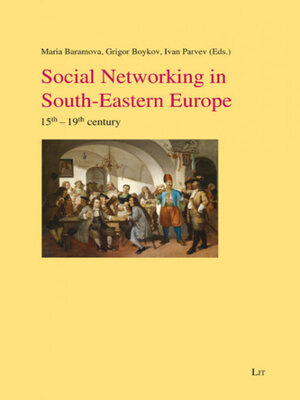Social Networking in South-Eastern Europe
ebook ∣ 15th-19th Century

Sign up to save your library
With an OverDrive account, you can save your favorite libraries for at-a-glance information about availability. Find out more about OverDrive accounts.
Find this title in Libby, the library reading app by OverDrive.



Search for a digital library with this title
Title found at these libraries:
| Library Name | Distance |
|---|---|
| Loading... |
“Social Networking” in South-Eastern Europe in the 15th–19th centuries exhibits specific characteristics: the Ottomans and the Habsburgs, for example, each have their pattern of building and using social networks, with the “Third South-Eastern Europe”, i.e., the vassal principalities in the Balkans and the re-created national states, staying closer in the Ottoman pattern. It seems that the Muslim-Oriental social traditions established in the Balkans during Ottoman rule had a clear impact on the building of networks and the exercising of social influence. The specific regional practices, once established, were very hard to overcome or to replace by other patterns of social networking. These practices, however, could easily interact in border areas with one other, giving the inhabitants on both sides of the frontier the possibility of living a socially amphibious life, at least in terms of Social Networking.
Ivan Parvev is Professor for Modern Balkan History at Sofia University St, Kliment Ohridski, Bulgaria.
Maria Baramova is associate Professor for Early Modern Balkan History at Sofia University St, Kliment Ohridski, Bulgaria.
Grigor Boykov is at the Faculty of History at Sofia University St, Kliment Ohridski, Bulgaria.
Ivan Parvev is Professor for Modern Balkan History at Sofia University St, Kliment Ohridski, Bulgaria.
Maria Baramova is associate Professor for Early Modern Balkan History at Sofia University St, Kliment Ohridski, Bulgaria.
Grigor Boykov is at the Faculty of History at Sofia University St, Kliment Ohridski, Bulgaria.







